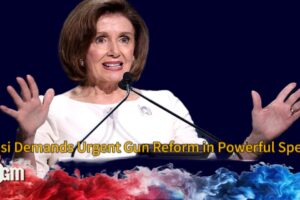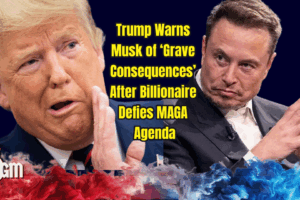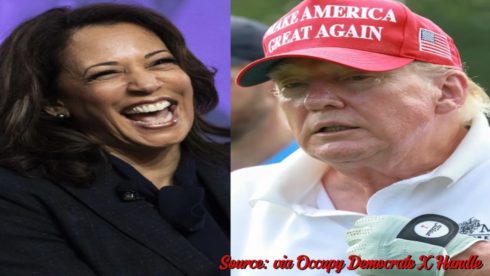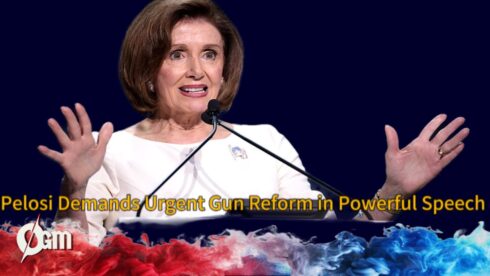Former President Donald Trump has ignited controversy with his recent statement claiming he is “much better looking” than Vice President Kamala Harris. This unconventional comment has raised eyebrows across the political spectrum, prompting discussions about the role of personal appearance in political discourse. Many observers view Donald Trump’s remark as a departure from substantive policy debates, potentially distracting from critical issues facing the nation.
The timing and nature of Donald Trump’s comment have led to speculation about his campaign strategy. Some political analysts suggest that by making such personal remarks, Trump may be attempting to dominate news cycles and shape the narrative of the presidential race. However, this approach risks alienating voters who prefer candidates to focus on policy proposals and solutions to pressing national challenges.
A Diversion from Policy Debate?
Critics argue that Donald Trump’s focus on physical appearance is a calculated move to shift attention away from policy discussions that could prove challenging for his campaign. By injecting personal comments into the political discourse, Donald Trump may be trying to create a narrative that overshadows the substantive differences between himself and his opponents on issues such as the economy, healthcare, and foreign policy.
This strategy, while potentially effective in generating media coverage, raises questions about the depth of political debate in the current electoral climate. It remains to be seen whether voters will respond positively to this approach or if they will demand a return to more policy-focused campaigning. The reaction to Donald Trump’s comments could serve as a barometer for public appetite for substantive political discourse in the lead-up to the election.
Swing State Polling: A Mixed Bag
Recent swing state polling conducted by the New York Times/Siena offers a nuanced picture of the presidential race. The polls indicate that Donald Trump is currently leading in Georgia and Nevada, two states that played crucial roles in the 2020 election. Conversely, Vice President Kamala Harris has taken the lead in Arizona and North Carolina, both considered key battlegrounds in the upcoming election.
These polling results underscore the competitive nature of the race and the regional variations in voter preferences. They suggest that both candidates have strengths in different parts of the country, setting the stage for an intense campaign focused on swaying voters in these crucial states. The mixed results also highlight the importance of state-specific strategies and the potential for shifts in voter sentiment as the campaign progresses.
A Close Contest in Key States
The polling data reveals a tightly contested race in several pivotal states. Georgia and Nevada, which were crucial to Donald Trump’s electoral strategy in 2020, appear to be leaning in his favor once again. This suggests that Donald Trump has maintained a strong base of support in these regions, potentially buoyed by local issues and voter demographics that align with his campaign messaging.
Meanwhile, Harris’s lead in Arizona and North Carolina represents a significant development. These states, with their substantial electoral votes, could play a decisive role in determining the outcome of the election. Harris’s performance in these states may indicate growing support for her campaign’s platform or dissatisfaction with the opposition among key voter groups.
Harris Gaining Ground in Strategic States
Vice President Kamala Harris’s lead in Arizona and North Carolina is particularly noteworthy, as it suggests her campaign is making inroads in strategically important states. These two states have been identified as crucial battlegrounds, and Harris’s strong showing indicates that her message is resonating with voters in these regions. This could be attributed to targeted campaign efforts, policy proposals that address local concerns, or shifts in voter demographics.
However, Donald Trump’s strong performance in Georgia and Nevada demonstrates that the race remains highly competitive. His ability to maintain a lead in these states suggests that his base remains energized and that his campaign continues to effectively mobilize supporters. The contrasting results in different swing states highlight the complexity of the electoral map and the challenges both candidates face in building a winning coalition.
A Long and Unpredictable Campaign Ahead
As the presidential campaign continues to unfold, it is clear that the path to the White House will be marked by uncertainty and intense competition. With multiple swing states in play and candidates employing diverse strategies to capture voter attention, the election outcome remains far from certain. The interplay between personal attacks, policy debates, and regional voter preferences will likely shape the narrative of the campaign in the coming months.
Both Donald Trump and Harris will need to navigate a complex political landscape, balancing the need to energize their base with the imperative to appeal to undecided voters in key states. As the campaign progresses, it will be crucial for both candidates to articulate clear visions for the country’s future while addressing the specific concerns of voters in battleground states. Ultimately, the American electorate will decide which candidate’s message and leadership style best align with their aspirations for the nation’s future.














